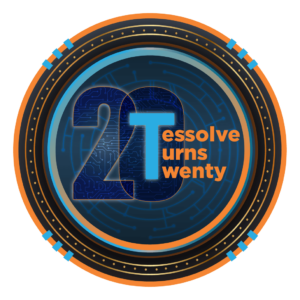A significant shift can be seen in the semiconductor industry; hence, innovative packaging technologies are coming forth to meet the demands of system scaling and achieve cost optimization. One such innovation is System Technology Co-Optimization (STCO) for IC Packaging; it is a concept and approach in the semiconductor industry and is also used by IC packaging design services providers.
It focuses on optimizing the semiconductor chip’s design and the packaging technology surrounding it. STCO has many benefits, such as empowering the team to work concurrently, enabling early 3D thermal stimulators, etc. However, some challenges are associated with it, which can be well-handled with shifting left testing. In this blog, we will delve into the STCO, its prominent benefits, and how shift-left testing can help overcome the challenges linked with STCO for IC packaging and PCB board design.
Understanding System Technology Co-Optimization
In STCO, an SoC type of system is disaggregated or partitioned into smaller modules (also known as chiplets) which can be designed asynchronously by dispersed teams and combined into a more extensive, highly flexible system. This approach recognizes that the performance and capabilities of modern electronic devices are not solely determined by the chip itself but also by how it is packaged and interconnected with other components in the system. Much like STCO for IC packaging, this approach recognizes that the performance and functionality of electronic devices are not solely determined by the individual components but also by how those components are integrated into the PCB board and interact with each other in the overall system.
Challenges Associated With System Technology Co-Optimization
Modern electronic systems are highly complex, with numerous components, subsystems, and interconnections. Co-optimizing all these elements can be challenging and requires advanced design and simulation tools. STCO requires close collaboration between engineers from different disciplines, including electrical, mechanical, thermal, and materials engineering. Effective communication and coordination among these teams can be challenging but are essential for success. Apart from this, some of the other prominent challenges associated with this methodology are given below:-
- A balance is crucial while arranging different components because the optimization of one may lead to problems in the other.
- Thermal management enhancement might result in a more significant form factor affecting the device’s portability. Hence, IC and PCB design engineers should carefully consider the trade-offs.
- Integrating different components, like CPU, sensors, etc., with varying sizes, power requirements, and thermal characteristics can be a significant challenge. Ensuring that they work together seamlessly requires careful planning.
- Achieving optimal performance often comes at a cost. Engineers must balance the desire for high performance with the need to keep production costs within acceptable limits to ensure market competitiveness.
Overcome Challenges in STCO With Shifting Left
Shift Left testing is a methodology in which early testing is done in the development process. This testing primarily involves testers at all the critical stages of the program. Improving the quality is the main purpose of this testing.
Shifting left in the context of System Technology Co-Optimization (STCO) refers to addressing challenges and considerations earlier in the design and development process rather than later stages. Identifying and mitigating potential issues earlier helps optimize the cost and time. Let’s discuss some of the same strategies for overcoming challenges in STCO by shifting left:
Define Clear Objectives: Defining clear goals and objectives of the STCO project from the beginning helps you recognize what you want to achieve and helps guide decision-making and prioritization throughout the design process.
Design Guidelines: Develop design guidelines and best practices to help engineers make informed decisions and avoid common pitfalls.
Standardization: Establish standard processes and tools for STCO to streamline workflows and ensure consistency across projects. This can help reduce the learning curve for new projects.
Early Collaboration: Foster close collaboration between different teams involved in STCO, such as electrical engineers, mechanical engineers, thermal experts, and materials scientists. Encourage them to work together from the project’s inception to ensure that various design aspects are considered.
Also Know: Understanding the Difference: Hardware Design vs. PCB Design
Choose Tessolve for Thorough Testing
Being an engineering testing services provider, Tessolve is well-equipped with various software testing solutions. To reap the maximum benefits of STCO in IC packaging and PCB board, shift left testing helps reduce the likelihood of costly rework, delays, and design issues. This proactive approach promotes more efficient, collaborative, and successful STCO projects. To streamline the testing process, we are the best choice for you. By utilizing our cutting-edge and wireless testing technologies, testing will be a breeze for you. Furthermore, if you want to shift left with STCO in the PCB design board in USA, we are here to help you.



